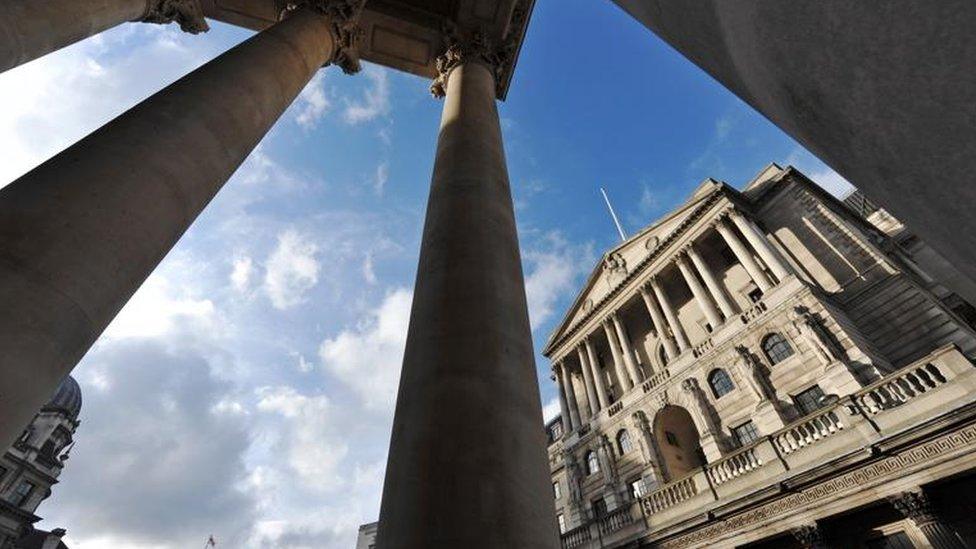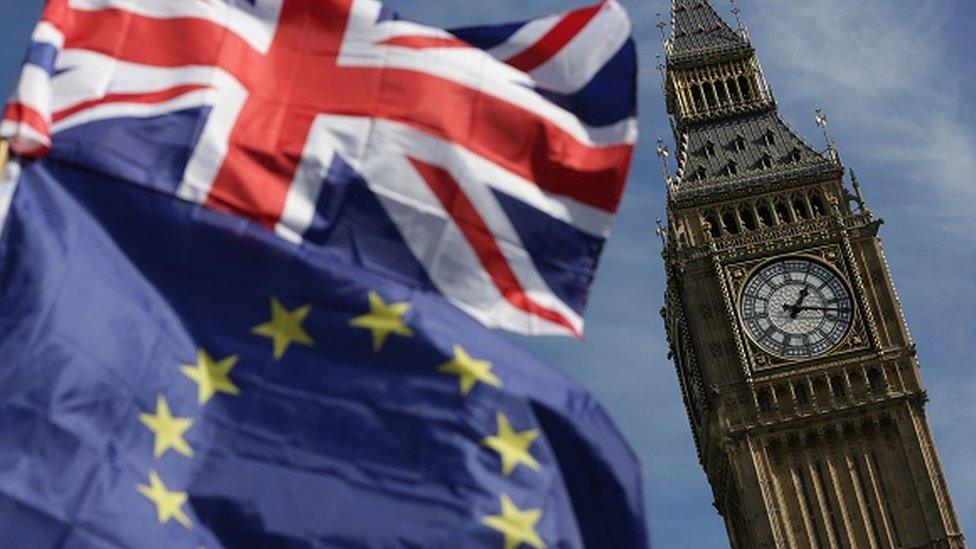Short term negatives, long term positives
- Published
- comments

The Bank of England moved into caution mode today.
After two major upgrades to its growth forecasts since the referendum - in November and February - today saw a slight downward revision.
But it is not time to race for the lifeboats.
The Bank said business investment was stronger than expected and that growth next year and in 2019 was likely to be slightly higher than previously forecast - although still significantly below 2%.
A prediction, it said pointedly, "conditioned on the assumptions that the adjustment to the United Kingdom's new relationship with the European Union is smooth".
Which it might not be.
For this year there are some major negative trends.
Pain now, gain later?
Consumers have started to feel the effects of inflation and there has been a "slowing in real household spending growth".
Wage growth is also "notably weaker than expected" and is set to be below inflation this year - meaning that real incomes are falling.
The incomes squeeze - felt so widely after the financial crisis - is back.
Businesses are still nervous about the future - and what they may invest in salaries - and there is enough slack in the labour market to make inflationary wage demands difficult.
At the same time, the Bank upgraded its inflation forecast, saying it could now hit 2.8% as the effects of the fall in the value of sterling wash through an economy that imports 40% of its food and fuel.
So, a tough 2017.
But the Bank's take on the temperature of the economy is more than a one year analysis.
And over the three year forecast period, it is more bullish.

Sterling has strengthened this year after its precipitate fall following the Brexit vote.
The European - and indeed global - economy is stronger than expected, important for a trading nation like the UK.
Wage growth will strengthen, it says, as the employment market tightens.
Inflation risk will dissipate as the effects of sterling's decline falls out of the data.
The incomes squeeze will reverse.
This is a carefully worded Inflation Report, drafted, of course, in the middle of an election campaign.
It is cautious in the short term, with the Bank indicating privately that 2017, when it comes to that key issue of wage growth, could be "the worst of it".
There is a sting in the tail.
Doves turn hawkish
Earlier this year the markets judged that the chances of an interest rate rise were so low there was only likely to be one increase over the next three years.
Today the Bank was certainly more hawkish, saying that monetary policy "could need to be tightened by a somewhat greater extent" than markets believed.
That is not to say there is likely to be an interest rate hike any time soon.
But, if the Bank's more positive outlook towards the end of the three year forecast period comes to pass, the Monetary Policy Committee could move more rapidly towards interest rate rises than some expect.